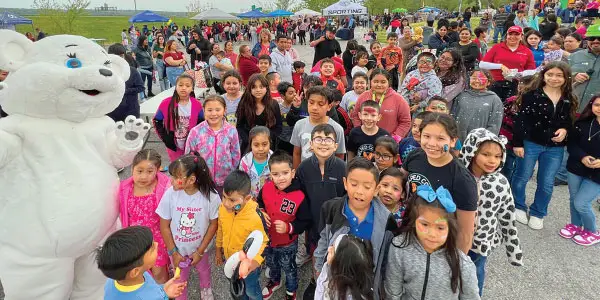 ¿Son válidas las afirmaciones del extendido y sistémico uso indebido de poder por parte de los agentes de policía? O ¿es que los últimos incidentes de alto perfil representan un número relativamente pequeño de casos aislados? ¿La tendencia de tiroteos con policías involucrados, de lesiones y muertes relacionadas con los arrestos, y de colisiones mortales durante persecuciones policíacas está aumentando, disminuyendo o está estática?
¿Son válidas las afirmaciones del extendido y sistémico uso indebido de poder por parte de los agentes de policía? O ¿es que los últimos incidentes de alto perfil representan un número relativamente pequeño de casos aislados? ¿La tendencia de tiroteos con policías involucrados, de lesiones y muertes relacionadas con los arrestos, y de colisiones mortales durante persecuciones policíacas está aumentando, disminuyendo o está estática?
Es imperativo que examinemos estas preguntas acerca de nuestros cuerpos policiales, un pilar fundamental de la sociedad civilizada.
¿Acaso los incidentes locales y nacionales recientes afirman que la conducta policial abusiva se ha institucionalizado o se está institucionalizando? Recientemente, en Kansas City, Mo., la policía disparó y mató a Eugene Turner, de 28 años de edad, en un tiroteo en East Side. Un adolescente de Independence está hospitalizado en estado crítico tras haber sido inmovilizado por la policía con una pistola eléctrica después de una parada de tráfico. El 13 de agosto, Jeremy House, un joven de 21 años de edad de Kansas City, Kan., estrelló fatalmente su coche mientras huía de la policía.
En Ferguson, Missouri, el 9 de agosto, un oficial de policía disparó al joven de 18 años de edad, Michael Brown, quien murió. El 17 de julio, en Staten Island en Nueva York, Eric Garner, de 43 años de edad, falleció mientras era arrestado por la policía después de que presuntamente se resistió al arresto. El 10 de agosto, el joven de 16 años de edad Daniel Guerrero perdió a toda su familia cuando una Dodge Durango se estrelló contra su Honda a 100 mph. Sus padres, su hermano pequeño y su tío murieron instantáneamente. El accidente, que también mató al conductor que huía de la policía de Texas y a su pasajero, puso fin a la persecución a alta velocidad.
A falta de estadísticas fiables sobre el número de tiroteos con la policía involucrada y las lesiones y muertes relacionadas con los arrestos a nivel nacional, no sabemos si la cantidad de incidentes está aumentando, se mantiene estable o está disminuyendo. Sólo alrededor de 750 de las aproximadamente 17,000 agencias policiales de la nación informan esas cifras al Departamento de Justicia de Estados Unidos.
Eso nos deja sin los datos completos necesarios para poder dar un seguimiento de las cifras oficiales sobre incidentes con intervención policial. Esta recopilación de datos sistémica es viable. Nuestro gobierno, diversas asociaciones comerciales y grupos de investigación nacionales mantienen bases de datos sobre cuestiones que van desde el número de personas en EE.UU. por la edad, raza, identidad étnica y nivel educativo hasta las flores y plantas de mayor venta en la nación o el número de usuarios del transporte público en los centros urbanos.
La evidencia anecdótica es lamentablemente insuficiente para identificar las tendencias y patrones en tiroteos policiales, las lesiones y muertes relacionadas con los arrestos y los choques mortales durante persecuciones policíacas. Es hora de hacer a nuestras agencias policiales responsables.
[divider]
Hiding from accountability?
Are claims of widespread, systemic misuse of power by police officers valid? Or do recent high-profile incidents represent a relatively few isolated cases? Is the trend in police-involved shootings, arrest-related injuries and deaths, and deadly police-pursuit collisions upward, static or downward?
It’s imperative that we examine the above questions about our law enforcement, a fundamental mainstay of civilized society.
Do recent local and national incidents affirm that abusive police conduct has become or is becoming institutionalized? Recently, in Kansas City, Mo., police officers shot and killed Eugene Turner, a 28-year-old in a shootout on the East Side. An Independence teenager is hospitalized in critical condition after being immobilized by the police with a stun gun recently after a traffic stop. On Aug. 1å3, Jeremy House, a 21-year-old Kansas City, Kan., man, fatally crashed his car while fleeing the police.
On Aug. 9 in Ferguson, Mo., a police officer shot 18-year-old Michael Brown, who died. On July 17 on Staten Island in New York, Eric Garner, 43, died while being restrained by the police after allegedly resisting arrest. On Aug. 10, 16-year-old Daniel Guerrero lost his family when a Dodge Durango smashed into the family’s Honda at 100 mph. His parents, little brother and uncle died instantly. The crash, which also killed the driver fleeing Texas police officers and his passenger, ended the high-speed chase.
Absent reliable statistics on the number of police-involved shootings and arrest-related injuries and deaths nationally, we don’t know whether the number of incidents are rising, holding steady or dropping. Only about 750 of the nation’s roughly 17,000 law enforcement agencies report the numbers to the U.S. Justice Department.
That leaves us without the comprehensive data necessary to track official figures on officer-involved incidents. Such systemic data collection is viable. Our government, various trade associations and national research groups maintain databases on matters ranging from the number of people in the United States by age, race, ethnicity and education level to the nation’s top-selling flowers and plants or the ridership of public transit in urban centers.
Anecdotal evidence is woefully insufficient to identify trends and patterns in police-involved shootings, arrest-related injuries and deaths and deadly police-pursuit collisions. It’s time to hold our law enforcement agencies accountable.
Are claåims of widespread, systemic misuse of power by police officers valid? Or do recent high-profile incidents represent a relatively few isolated cases? Is the trend in police-involved shootings, arrest-related injuries and deaths, and deadly police-pursuit collisions upward, static or downward?
It’s imperative that we examine the above questions about our law enforcement, a fundamental mainstay of civilized society.
Do recent local and national incidents affirm that abusive police conduct has become or is becoming institutionalized? Recently, in Kansas City, Mo., police officers shot and killed Eugene Turner, a 28-year-old in a shootout on the East Side. An Independence teenager is hospitalized in critical condition after being immobilized by the police with a stun gun recently after a traffic stop. On Aug. 1å3, Jeremy House, a 21-year-old Kansas City, Kan., man, fatally crashed his car while fleeing the police.
On Aug. 9 in Ferguson, Mo., a police officer shot 18-year-old Michael Brown, who died. On July 17 on Staten Island in New York, Eric Garner, 43, died while being restrained by the police after allegedly resisting arrest. On Aug. 10, 16-year-old Daniel Guerrero lost his family when a Dodge Durango smashed into the family’s Honda at 100 mph. His parents, little brother and uncle died instantly. The crash, which also killed the driver fleeing Texas police officers and his passenger, ended the high-speed chase.
Absent reliable statistics on the number of police-involved shootings and arrest-related injuries and deaths nationally, we don’t know whether the number of incidents are rising, holding steady or dropping. Only about 750 of the nation’s roughly 17,000 law enforcement agencies report the numbers to the U.S. Justice Department.
That leaves us without the comprehensive data necessary to track official figures on officer-involved incidents. Such systemic data collection is viable. Our government, various trade associations and national research groups maintain databases on matters ranging from the number of people in the United States by age, race, ethnicity and education level to the nation’s top-selling flowers and plants or the ridership of public transit in urban centers.
Anecdotal evidence is woefully insufficient to identify trends and patterns in police-involved shootings, arrest-related injuries and deaths and deadly police-pursuit collisions. It’s time to hold our law enforcement agencies accountable.









